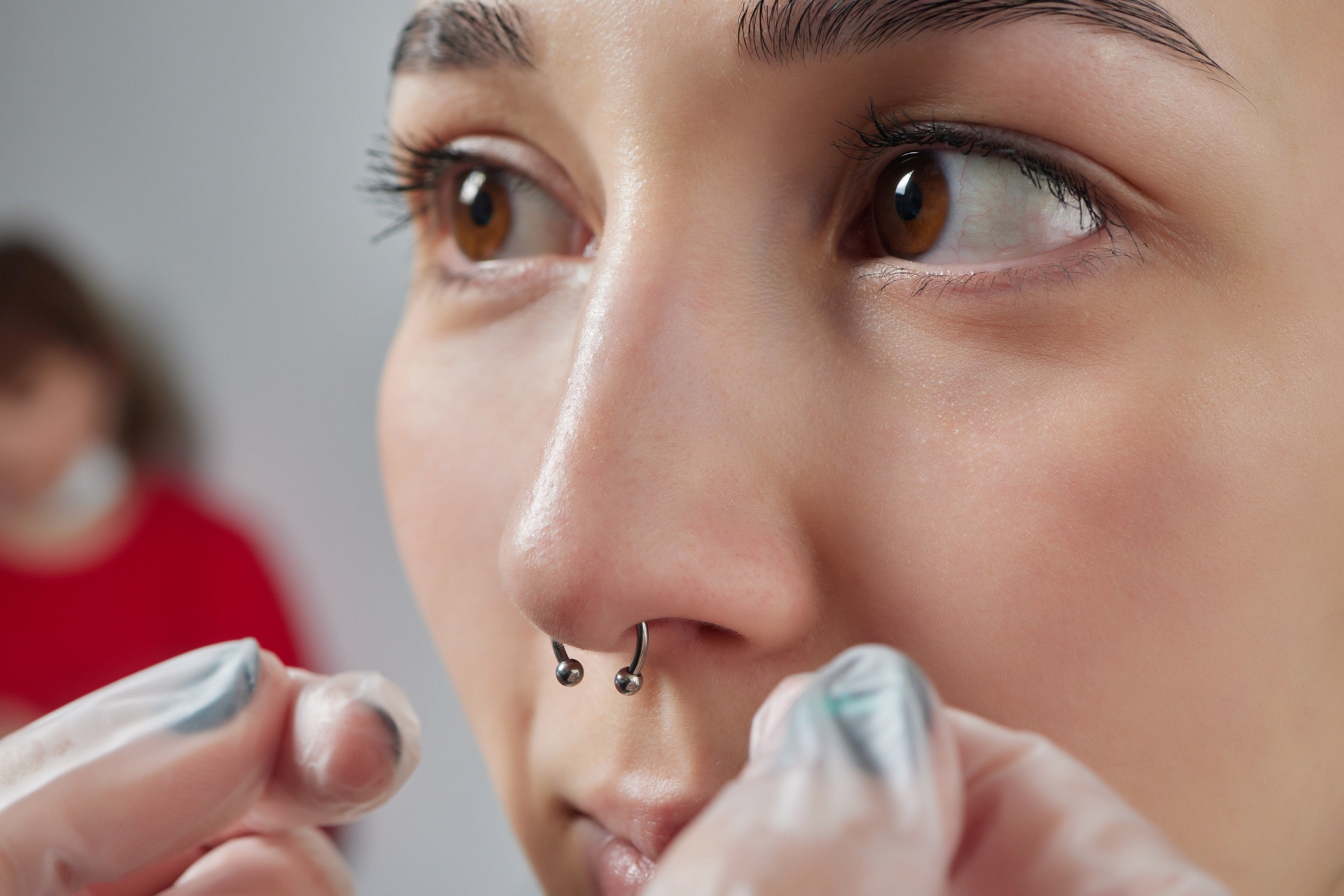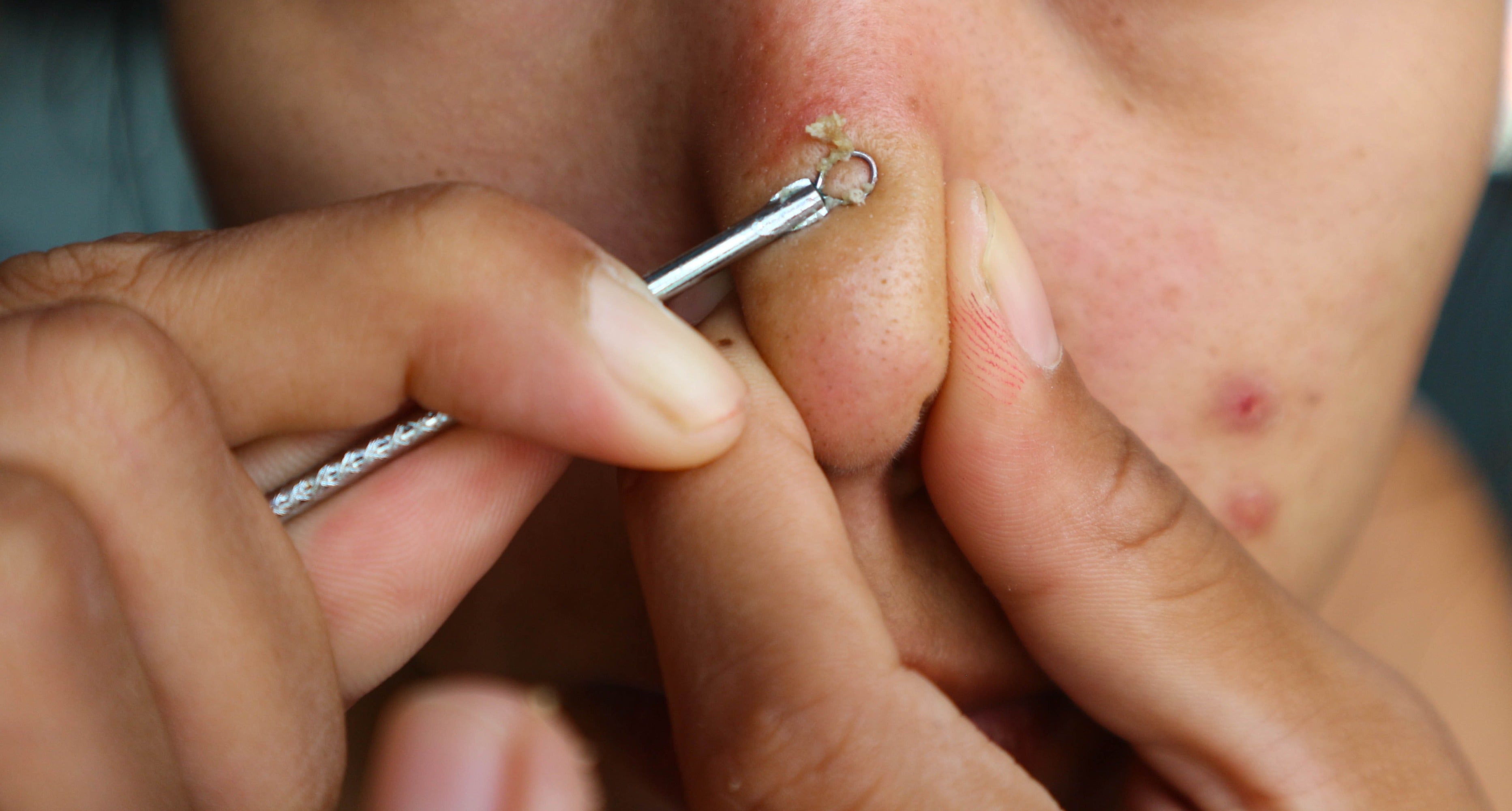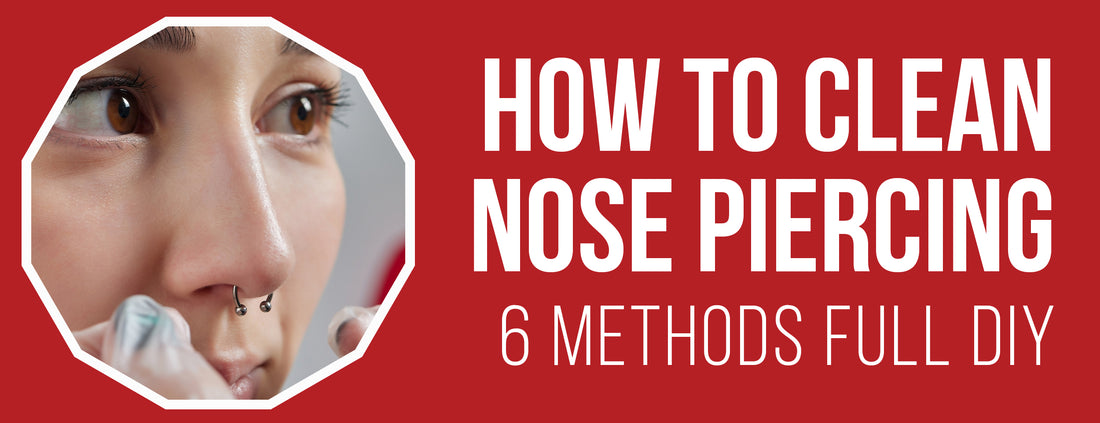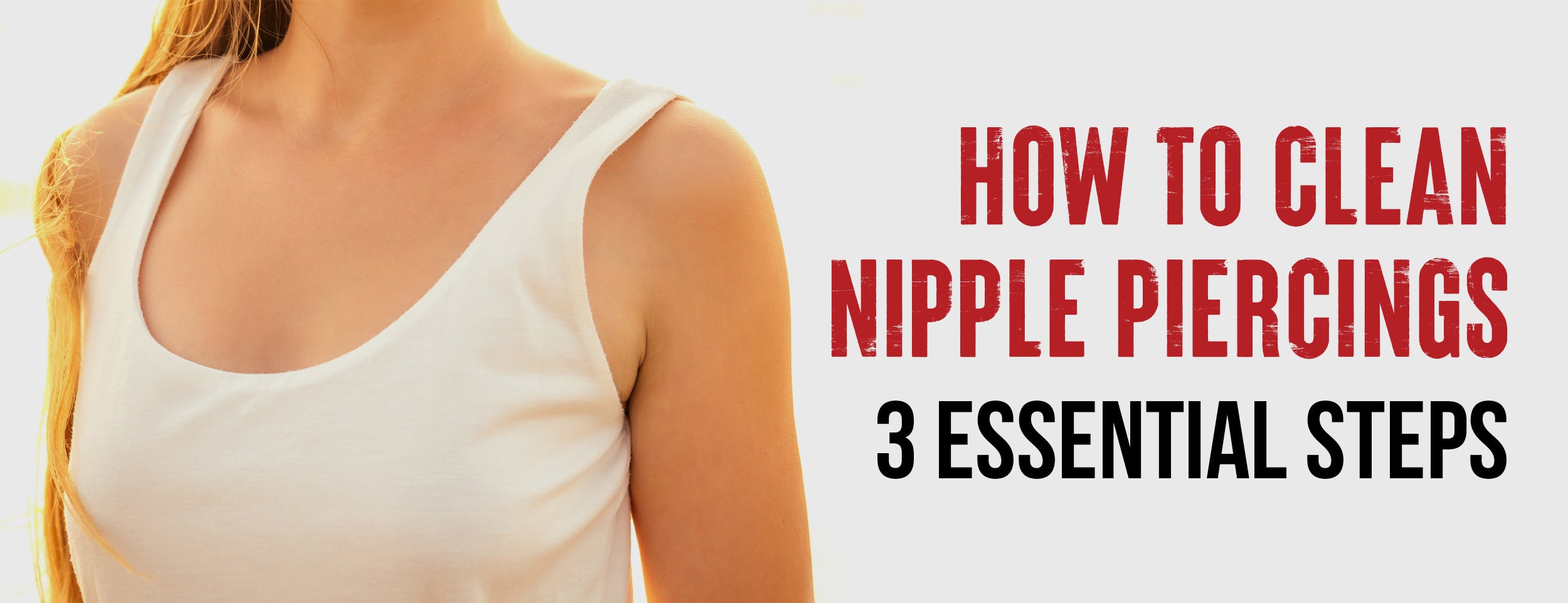Healing a nose piercing takes time, but you can ensure a smooth recovery with just a few daily cleanings. Proper aftercare is crucial to promote a seamless healing process.
Clean the site at least twice daily with a saline solution. Only touch the piercing area with freshly washed hands. Once the piercing has fully healed, clean the spot with mild, unscented soap.
In this blog post, we will delve into six highly effective methods for cleaning your nose piercing, vital prevention measures, and potential risks to remember.
How To Clean Nose Piercing: 6 Methods

People love nose piercings as self-expression but require proper care to avoid complications. Maintaining good hygiene is essential, whether you’ve just gotten your piercing or have had it for a while. Follow these steps to keep your nose piercing clean and infection-free.
Wash Your Hands
Before you touch your precious piercing, take a moment to scrub your hands thoroughly. Clean hands are your first line of defense against infections. Follow these steps:
- Scrub: Use soap and warm water to wash your hands for at least 20 seconds.
- Rinse: Rinse off any soap residue.
- Dry:Pat your hands dry with a clean towel.

Prepare a Saline Solution
A saline solution helps clean your piercing and promotes healing. Here’s how to make one:
Ingredients:
- Warm water
- Non-iodized sea salt (1/4 teaspoon per 8 ounces).
Instructions:
- Mix warm water with the specified amount of non-iodized sea salt.
- Stir until the salt dissolves completely.
- Voila! You’ve created your saline solution.
Soak a Cotton Ball or Pad
Now that you have your saline solution, follow these steps:
- Dip: Immerse a cotton ball or pad into the saline solution. Ensure it’s saturated but not dripping.
- Apply: Gently press the soaked cotton ball against your piercing. Hold it there for a few minutes.
Remove Any Debris

Around the piercing crustiness or gunk that can accumulate. Be patient and follow these steps:
- Gently Wipe: Use a clean cotton ball or pad to remove debris.
- Avoid Force: force nothing; let the debris come off naturally.
Rinse the Piercing
Rinsing your nose piercing with clean water helps remove any remaining salt residue and keeps the area fresh.
Procedure:
- Cup your hands under running water.
- Gently splash water onto your piercing.
- Imagine you’re washing away negativity (and germs).
Pat Dry with a Clean Tissue
After rinsing, gently pat your piercing dry with a soft, clean tissue. Avoid rough towels, as they irritate the skin around the piercing.
Clean Twice a Day
Consistency is vital to successful healing. Follow these steps morning and night:
- Repeat Steps 2 to 7: Continue using the saline solution and rinsing your piercing.
- Be Diligent: Don’t skip a day; your piercing deserves consistent care.

Nose Piercing Prevention Measures: 4 Tips
Nose piercing is a popular form of body modification that can enhance one's style and self-expression. Safety must be prioritized when considering or maintaining a nose piercing. By following proper safety measures, individuals can minimize the risk of complications and enjoy the beauty of this fashionable trend.
Keeping the Original Jewelry
For a safe and successful nose piercing, keep the initial jewelry in place during the recommended healing period. Changing too soon raises infection risks and can close the piercing. Follow professional advice and wait until fully healed before considering jewelry changes.
- Healing Period: The initial jewelry should ideally be left in for the entire healing period, typically ranging from 8 to 12 weeks for nose piercings and 6 to 8 weeks for septum piercings.
- Infection Risk: Prematurely changing the jewelry can introduce bacteria and irritate the delicate healing tissue, increasing the likelihood of infection.
- Closure Concerns: The body may close the piercing if the jewelry is removed too early, causing a painful and potentially costly re-piercing procedure.
By adhering to the advice to leave the original jewelry in place, individuals can significantly reduce the risk of complications and support the healthy healing of their nose piercing.
Avoid Cotton Swabs or Rounds

When cleaning the piercing, it's advisable to steer clear of cotton swabs or rounds. These materials can leave fibers behind, which may become trapped in the piercing, potentially leading to irritation or infection. Instead, opt for methods that minimize the risk of introducing foreign particles into the delicate piercing site.
Avoid Swimming
Swimming in pools, lakes, or hot tubs is discouraged during the healing period of a nose piercing, as these environments can harbor bacteria and other contaminants that may compromise the healing process and increase the risk of infection.
- Bacterial Exposure: Bodies of water, such as pools and lakes, can contain various microorganisms that pose a risk of infection when they come into contact with a healing piercing.
- Chemical Irritants: Chlorinated water in pools, hot tubs, and natural elements in lakes can irritate the piercing and delay healing.
- Healing Environment: It's important to prioritize a consistently clean and dry environment for the piercing to heal effectively, making it advisable to avoid swimming until the piercing is fully healed.

Minimize Touching
To prevent bacteria transfer and maintain a clean environment around the piercing site, it's crucial to minimize touching during the healing process. Avoid playing with or touching the piercing, as this can introduce dirt and bacteria, which can cause infections and complications.
- Bacteria Transfer Alert: Every time the piercing is touched, there is a risk of introducing harmful bacteria from the hands or surrounding environment.
- Gentle Cleaning Only: The only touching recommended during the healing process should be carefully cleaning the area and using clean hands and sterile saline solution.
- Hands-Off Approach: By adopting a hands-off approach, people can minimize irritation, inflammation, and infection, allowing the piercing to heal without unnecessary interference.
By being mindful of the importance of minimizing touching, individuals can contribute to a safer and more successful healing process for their nose piercing.
6 Risks Associated with Nose Piercing Cleaning

Keeping a nose piercing clean is crucial for preventing potential risks and ensuring proper healing. You should consider the following points regarding the risks of cleaning nose piercings.
Infection
Failure to clean a nose piercing regularly can increase the risk of bacterial infection. Bacteria accumulation around the piercing site may lead to redness, swelling, and discharge. An untreated infection can cause complications and require medical intervention in severe cases.
Irritation
If the piercing is not cleaned correctly or with harsh cleaning agents, it can irritate the surrounding skin. This can manifest as redness, itching, and discomfort, hindering healing and causing unnecessary pain.
Delayed Healing
Neglecting proper cleaning practices may lead to delayed nose piercing healing. Cleanliness is essential for creating an optimal environment for the body to heal the piercing. The healing process can be prolonged without adequate care, leading to frustration and discomfort for the individual with the piercing.

Scarring
An infected nose piercing can cause scarring if not cleaned correctly. The development of scar tissue around the piercing can affect the aesthetic appearance and may require additional treatments.
Symptoms of Allergies
There may be allergic reactions to specific cleaning solutions or products used to clean the piercing. This can cause further irritation and potential complications, highlighting the importance of gentle, hypoallergenic cleaning agents.
Piercing Migration or Rejection
In rare cases, poor cleaning practices can contribute to piercing migration or rejection. This occurs when the body's natural healing response expels the piercing from the skin. Proper cleaning and care can help minimize the risk of this outcome.
Conclusion
Cleaning your nose piercing is a crucial part of the healing process and essential for preventing infections and other complications. Following the steps outlined in this guide and implementing the prevention measures provided, you can ensure that your nose piercing heals correctly and with no issues.
Remember to be gentle, consistent, and patient throughout the healing journey, and contact your practitioner if you have any concerns or questions. With proper care and attention, you'll soon be confidently flaunting your beautifully healed nose piercing.







![The Recovery Time and Stages of Nipple Piercings [Best Practices]](http://drnumb.com/cdn/shop/articles/How_Long_Do_Nipple_Piercings_Take_To_Heal__3_Stages_Explained.jpg?v=1714373243)

